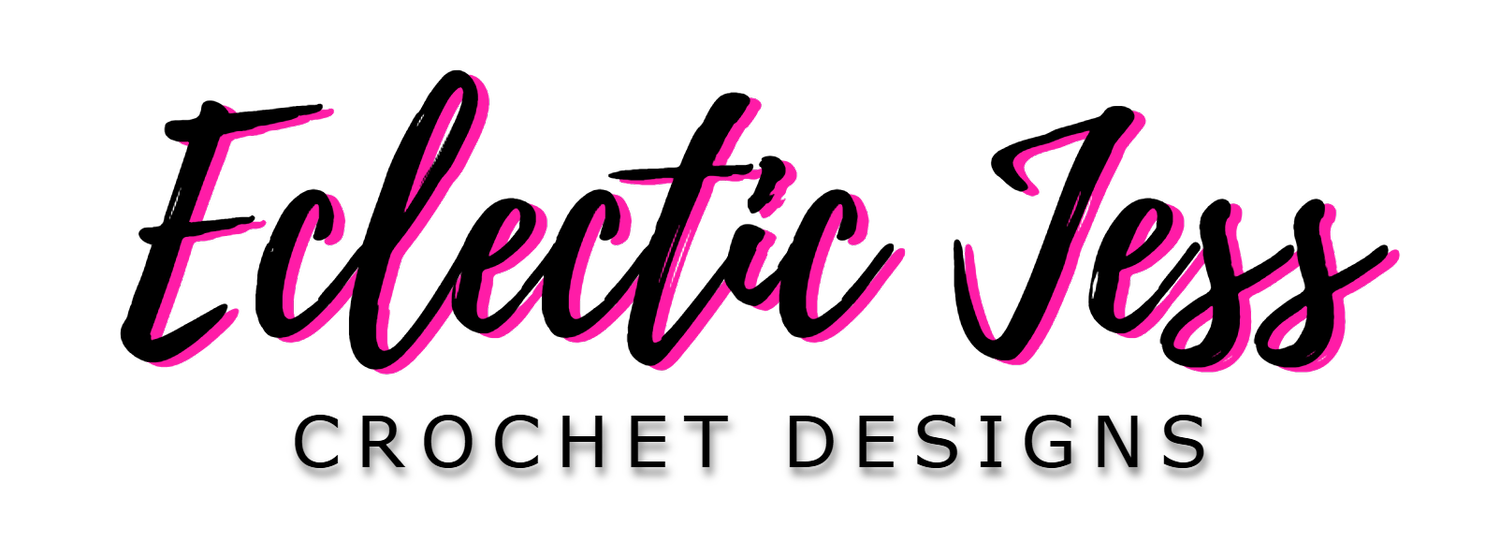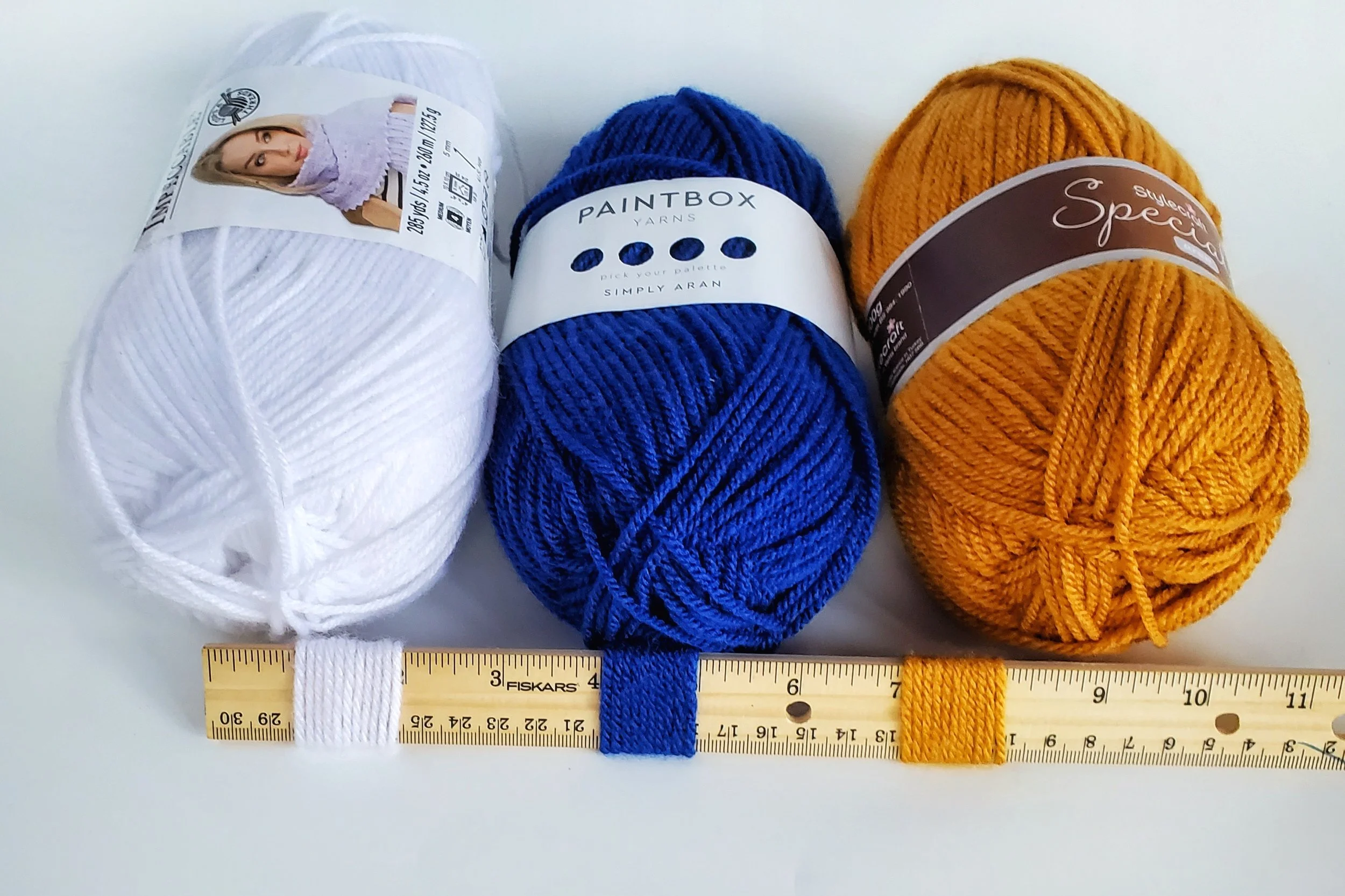Yarn Weight & WPI
I’m a firm believer that one of the most intimidating parts of learning to crochet is learning about the tools and materials available. It seems easy, right? Grab hook, grab yarn, and make loops until it looks pretty. But the choice of hook and yarn can make a big impact on your project!
What is yarn weight?
If you’re totally new to yarn, you might be thinking that this is easy. The weight is listed right on the label - you don’t even need a scale! But that measurement in grams or ounces is actually for the entire ball, skein, or hank. When referring to yarn weight, you’re looking at the thickness of the yarn.
Yarn weight can also found on the label, but it looks a little different. A number shown on a black and white skein typically indicates the weight, as determined by the manufacturer, on a scale from 0-10. The smaller the number, the thinner the yarn.
But there’s lots of different ways to convey how thick your yarn actually is! Terms like fingering, sport, baby, worsted, and chunky get mixed up with numbers 0-7, and it can feel a bit overwhelming. Some terms can be used interchangeably, making it even more confusing.
But what is WPI, and where does that come in?
WPI stands for wraps per inch, and it can be extremely helpful in determining the weight of your yarn, or comparing the weight of different brands. In substituting yarns in a pattern, you can compare WPI to be as close as possible to meet the same gauge. It can also be helpful when you’ve lost a yarn label and are trying to identify a mystery skein.
You can use a WPI tool or a plain $.10 wooden ruler to help figure out what the weight of your yarn is:
Wrap your yarn around the tool or ruler, to measure how many times you wrap it around in the space of an inch. Just don’t wrap it too tightly! If you pull your yarn tight, it will make it feel thinner, and you’ll count too many wraps for it to be an accurate representation of the yarn weight.
Comparing three #4 weight yarns, described as worsted or aran: Loops & Threads Impeccable (11 WPI), Paintbox Simply Aran (10 WPI), and Stylecraft Special Aran (11 WPI)
So how I can use this information?
Pretend you’ve got a skein that says 4 Medium and a pattern that calls for dk weight. How do you know if they’re compatible? Well, you can do a gauge swatch (which I always recommend for size specific items!), or you can save yourself from having to make multiple swatches by doing a tiny bit of research first.
I created the following chart with the standard yarn weight symbols from The Craft Yarn Council. This chart compares the symbol (and representative number) to the range of WPI and common terms for each weight, so you can interpret the different ways of describing yarn weight:
From the chart, we can see that dk weight is a size 3 Light, so a 4 Medium skein is likely too thick to work well with a pattern calling for dk weight. But, there is some overlap in the WPI, so they might be a closer weight than you think!
If the pattern writer included WPI or recommended a specific brand of yarn, you can compare that to the yarn you have on hand. The closer the WPI, the closer your gauge swatch is likely to be, and the better substitute your yarn is!



